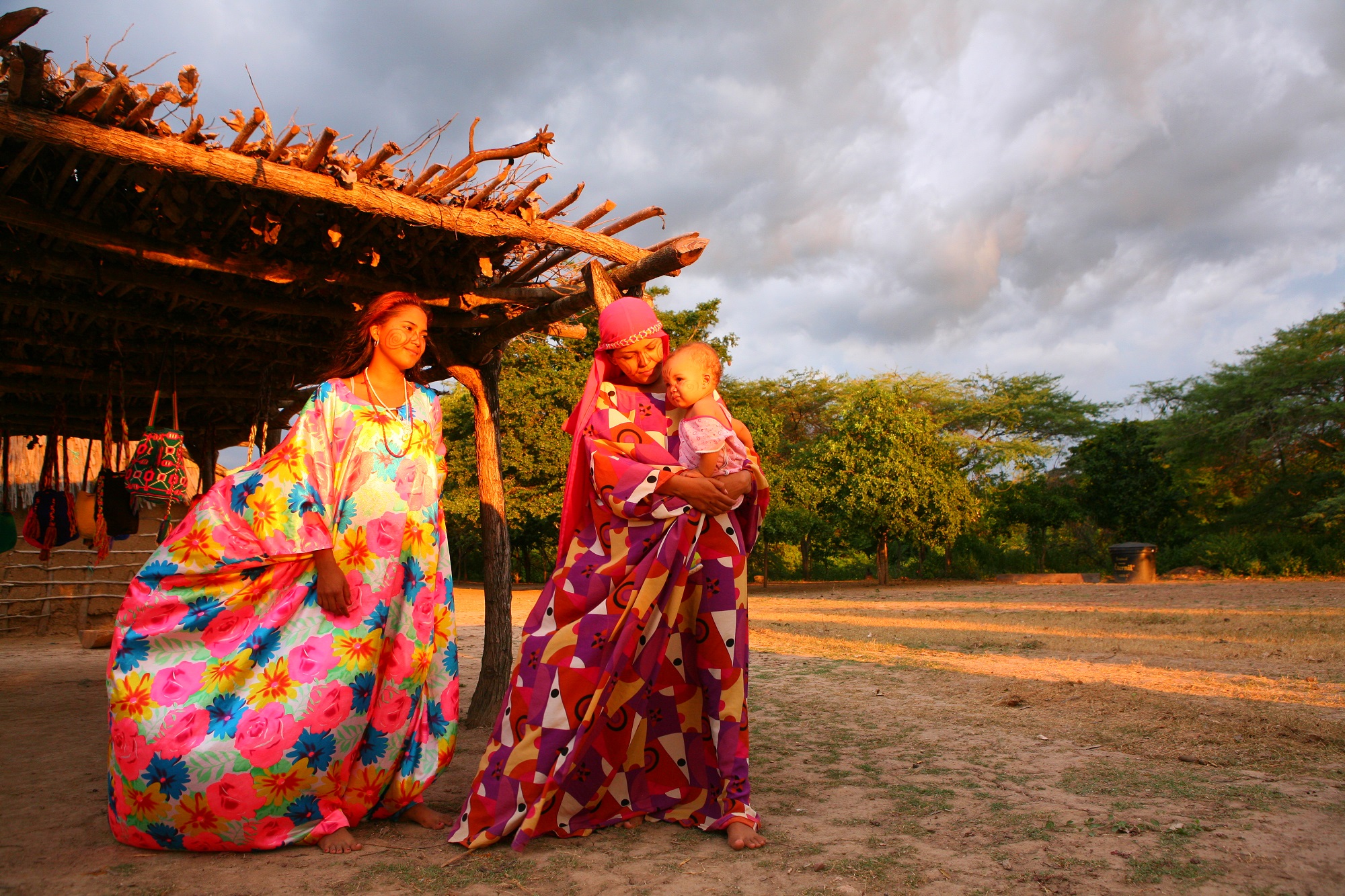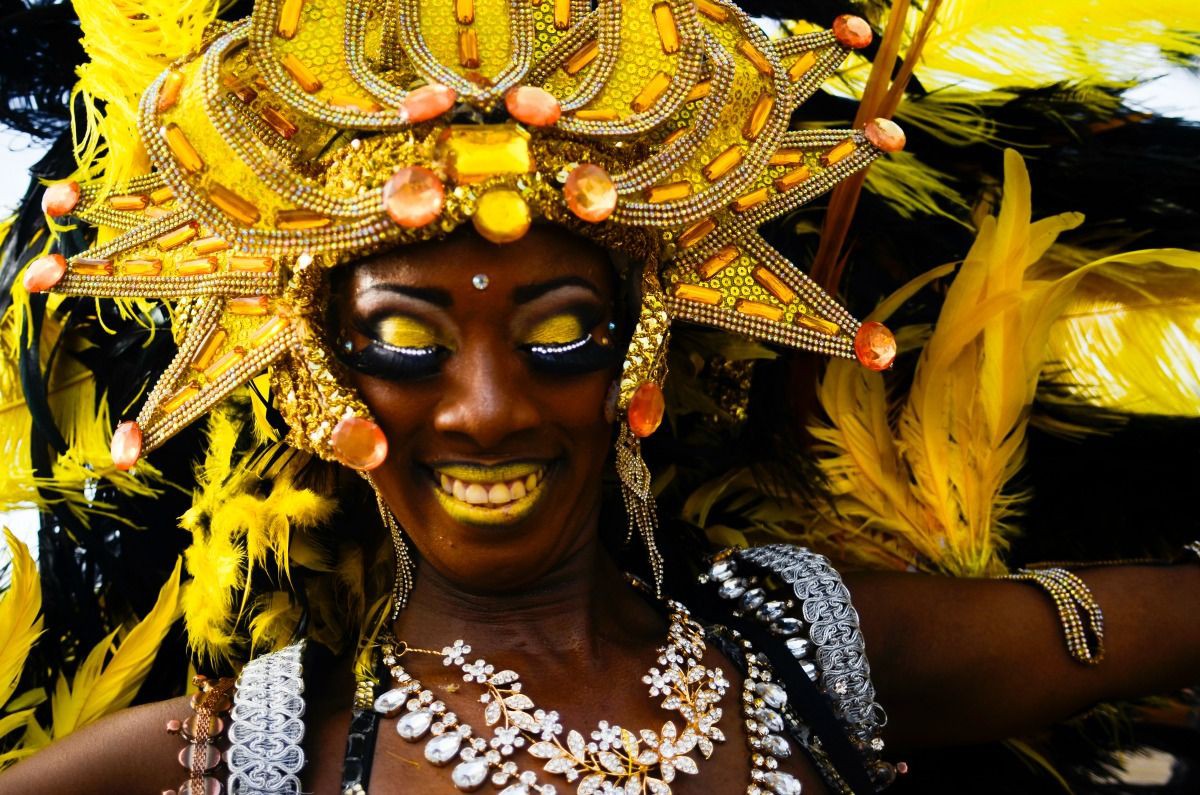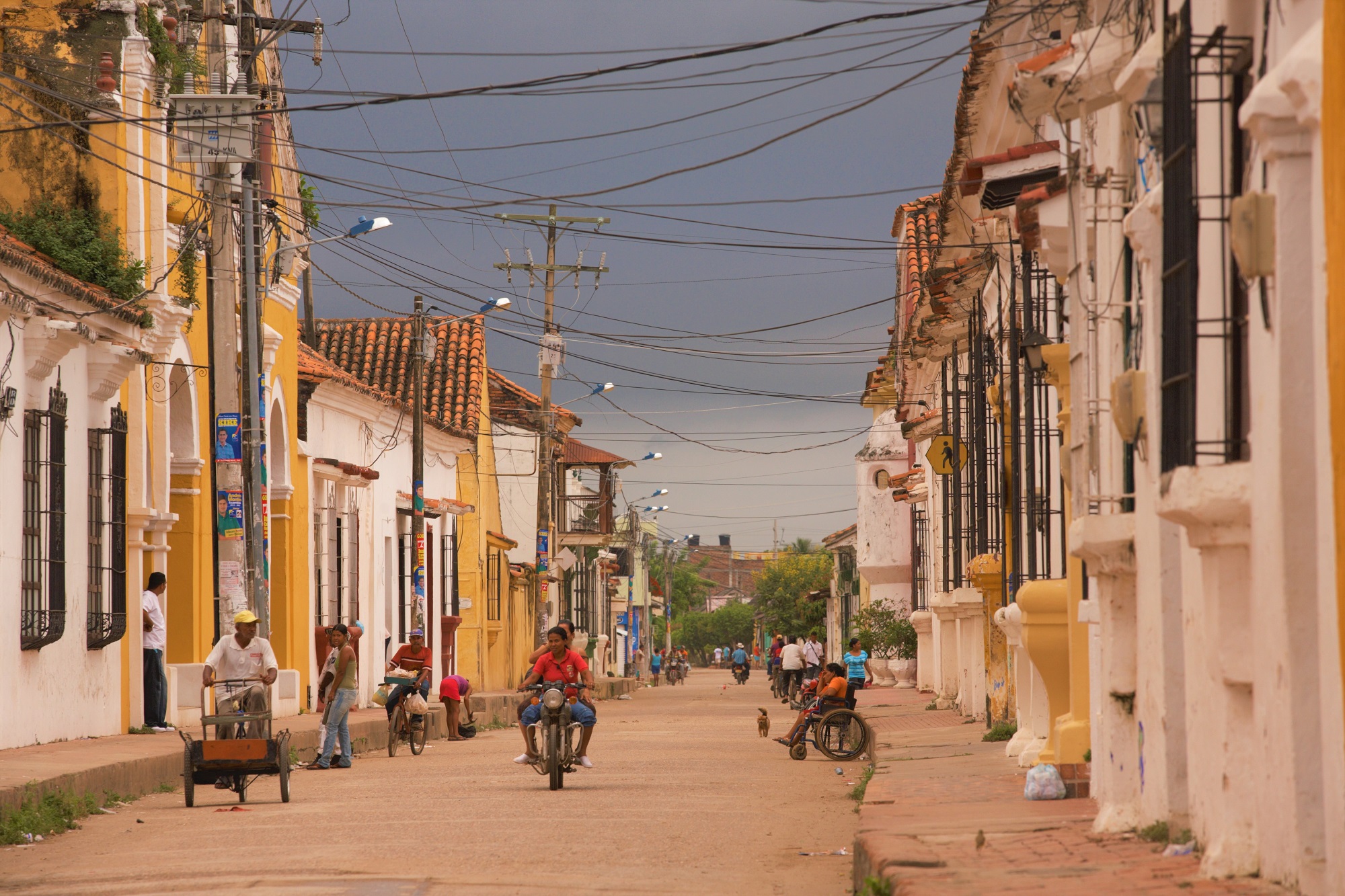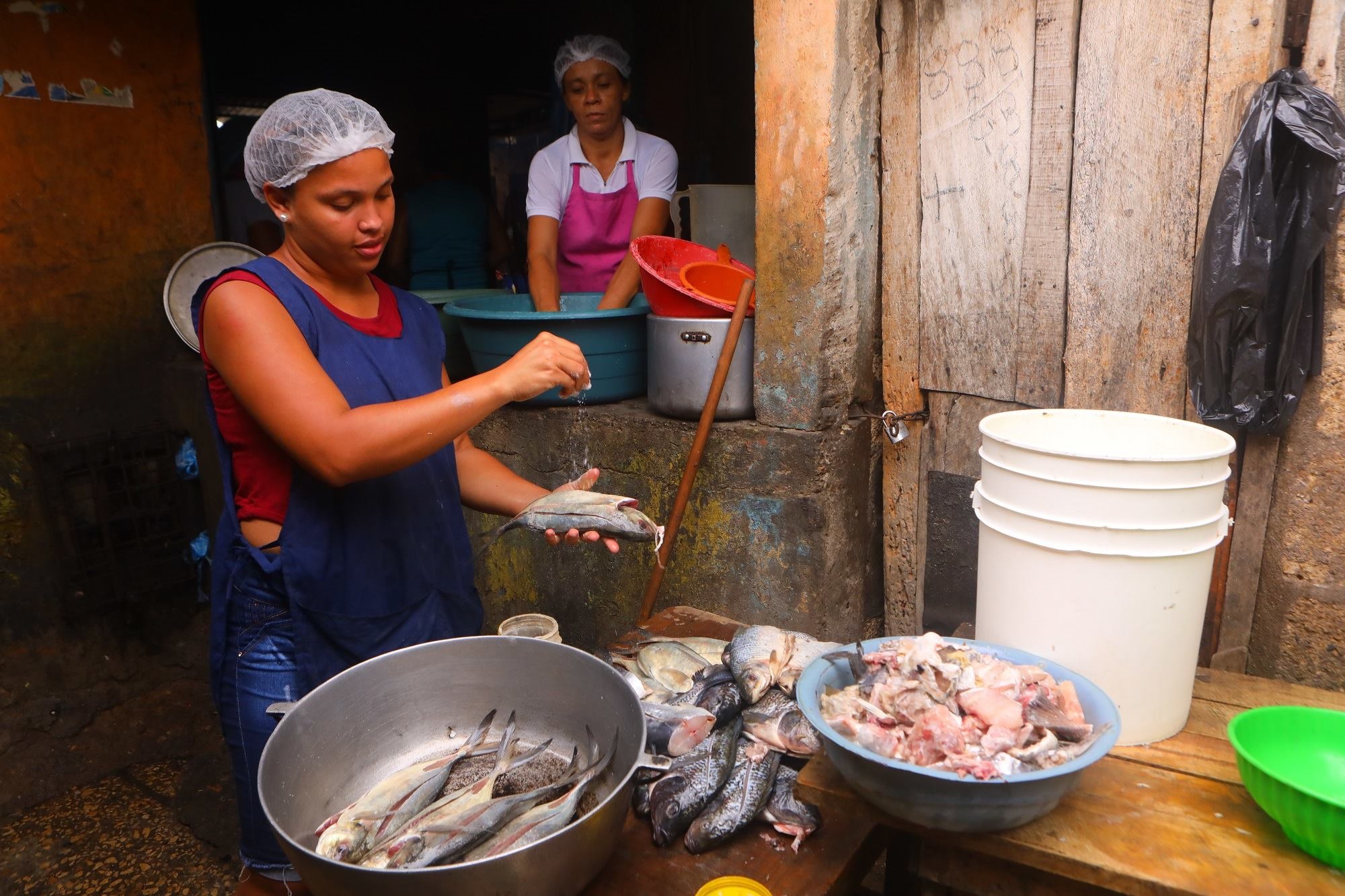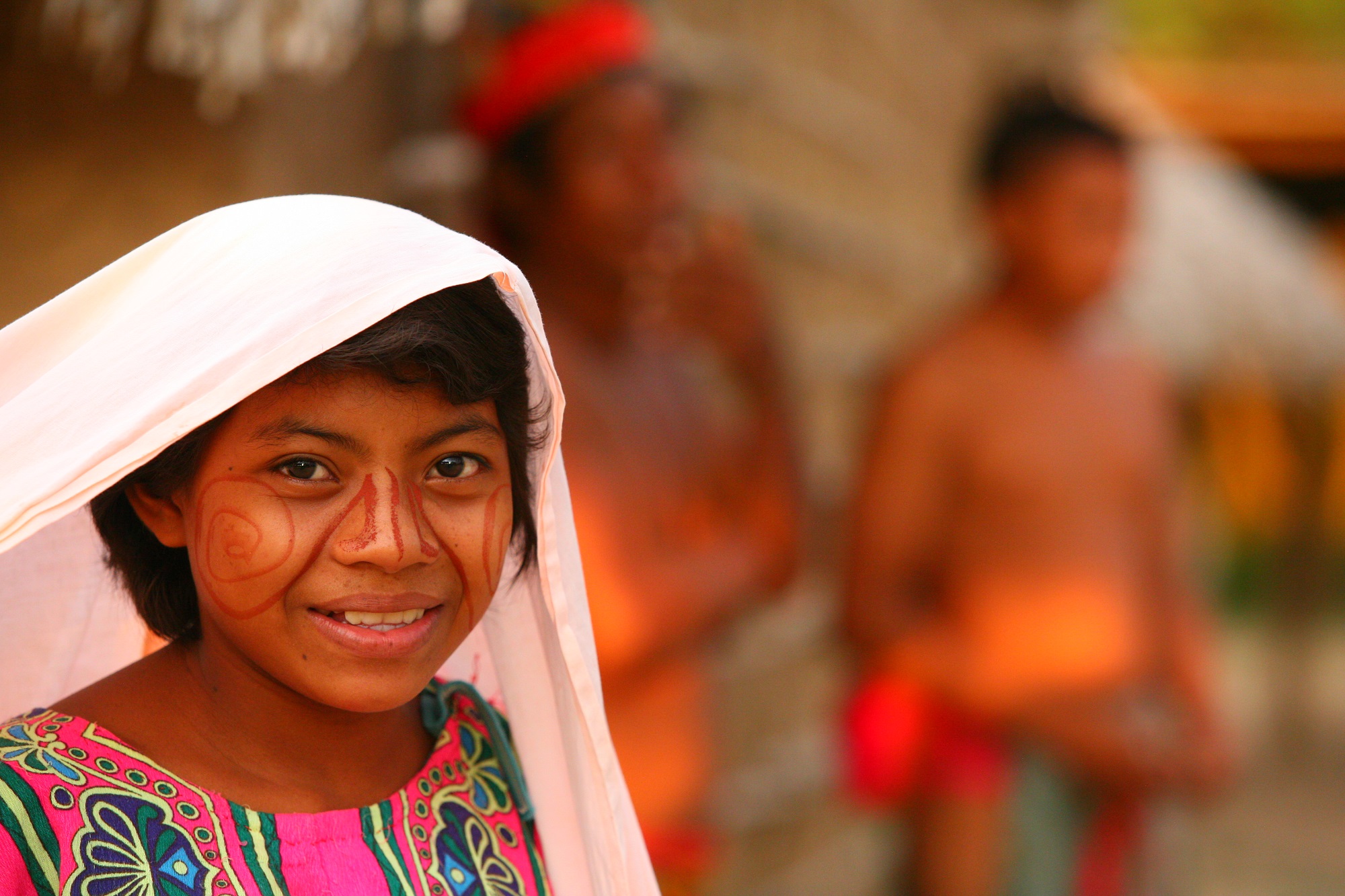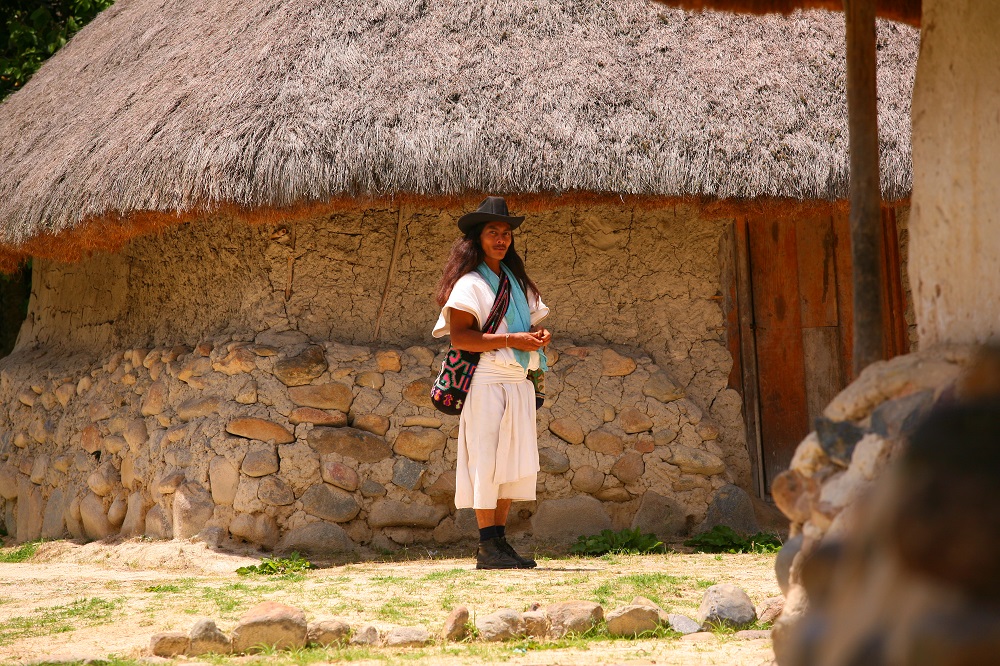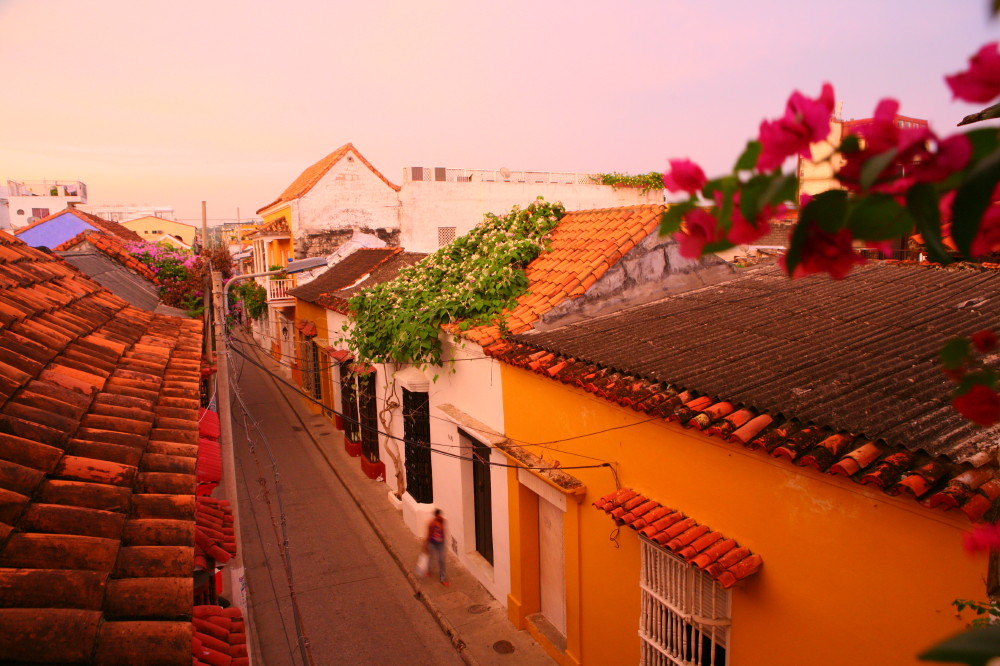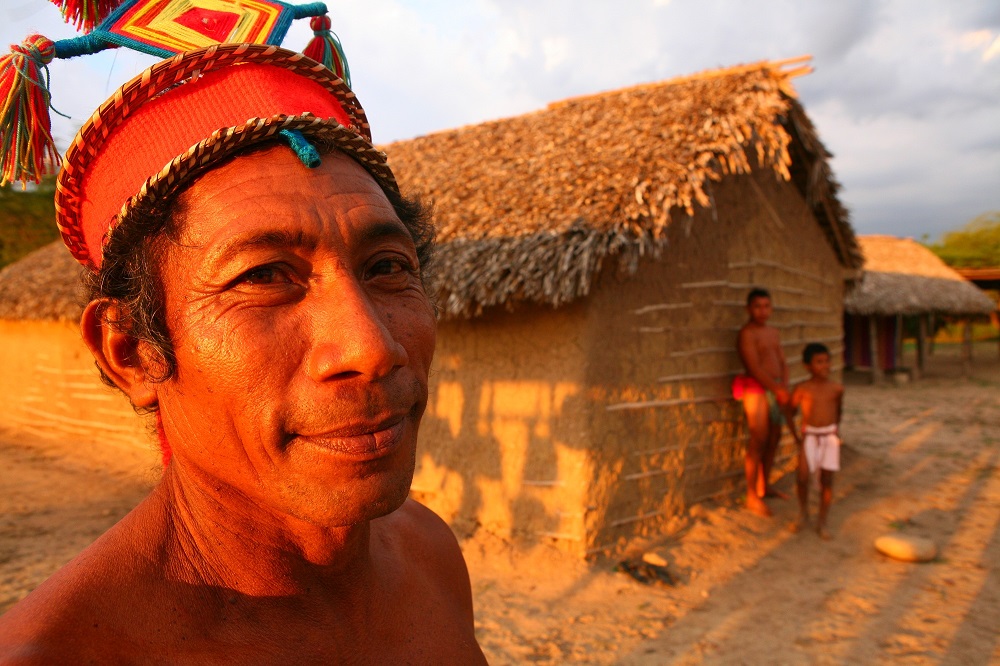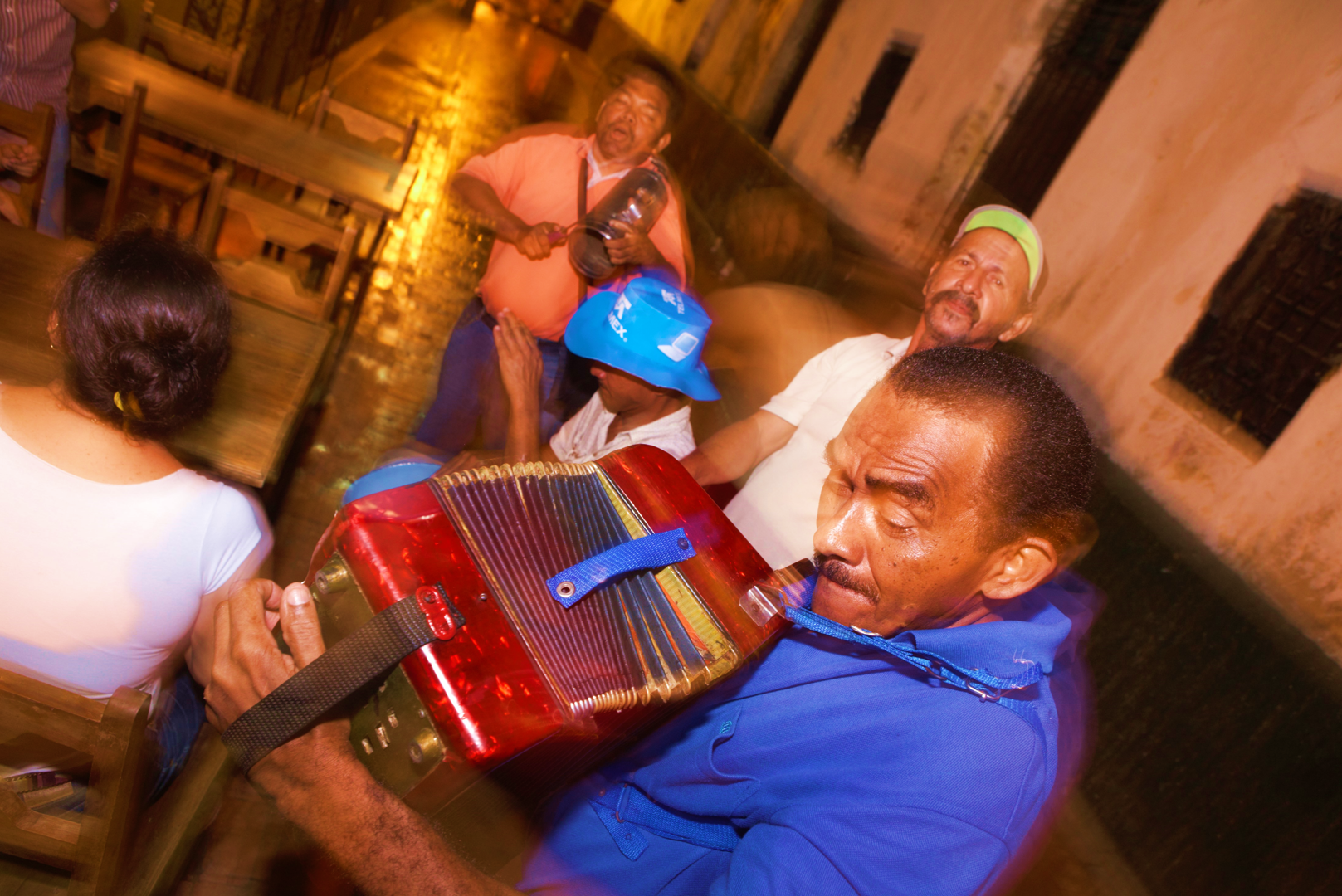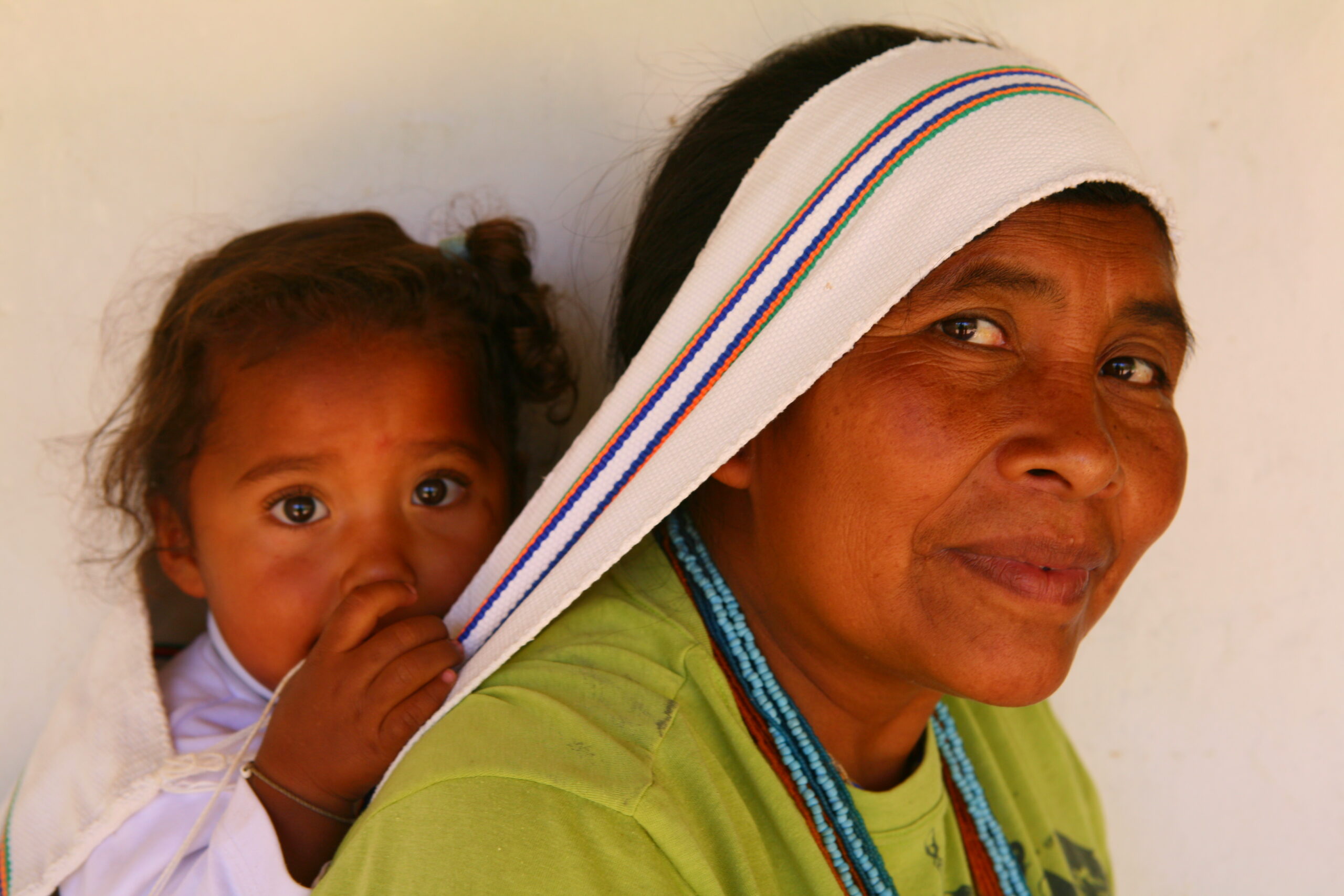Overview
Colombia is well-known for its many indigenous groups—87 in total—comprising almost four percent of the population. Most live in isolated pockets of the Amazon, and/or in resguardos (autonomous reserves) inaccessible to visitation. However, the Caribbean zone has several distinct groups that are easy to encounter and photograph.
This one-of-a-kind itinerary will immerse you in the Wayúu culture of La Guajira desert, at the northernmost tip of South America. We’ll then journey into the foothills of the Sierra Nevada de Santa Marta to visit the autonomous lands of the Arhuaco/Kogi people (profiled in Christopher’s article for BBC Travel). Plus, we’ll visit Atanquez to photograph the Wiwa indigenous people during the Corpus Christi “Dance of the Devil’s” festivities.
Plus, in Cartagena and San Basilio de Palenque, we’ll explore the Afro-Caribbean culture, including photographing Cartagena’s famed palenqueras (fruit-sellers) and, in Barranquilla, the traditional mask-makers who supply many of the outrageous masks for Colombia’s world-class carnival. We also plan on photographing carnival dancers… as well as traditional filigree silversmiths in the landlocked time-warp city of Mompox… plus the fishers who occupy an out-of-the-way palafito (stilt-house) village in the midst of Colombia’s largest lagoon.
NOTE: Although this trip involves only moderate walking on the level in Cartagena and Mompox, plus short but steep cobbled streets in Atanquez, the weather throughout will be hot and humid, and potentially debilitating. Please consider this when determining whether to reserve.
Itinerary
Day 1 (May 23): Arrive Cartagena, with its fabulously preserved and restored colonial quarter still tucked behind fortified walls. The city was memorably portrayed by Nobel Prize-winning Colombia novelist Gabriel García Márquez as a place of “amethyst afternoons and nights of antic breezes.” We meet this evening for a welcome reception and dinner together at one of the city’s best restaurants. Overnight in Cartagena.
Day 2 (May 24): This early morning we’ll explore the historic and vibrant Getsemani—a historic district that has recently been gentrified and is adorned with street art. You’ll then have free time to rest or to roam the plazas and back streets of the walled city, with its fabulous architecture and maze of narrow colonial streets teeming with colorful street life and horse-drawn carriages (after 5pm). We’ll gather again to explore the walled city for a private “golden hour” photo shoot with palenqueras–Cartagena’s quintessential Afro-Caribbean fruit-basket women dressed in traditional rainbow-hued costumes in the style of Carmen Miranda. We’ll dine at another of Chris’ favorite restaurants. Overnight in Cartagena.
Day 3 (May 25): This morning we journey to the outskirts of Barranquilla, the port city renowned for its February carnaval—second in size only to that or Rio de Janeiro. We’ll stop in the Galapa neighborhood on the city outskirts to visit the top craft workshop that specializes in making hand-carved carnival masks. We’ll also have lunch here, plus a private photo session with a carnival dance troupe, before departing for Santa Marta, where we’ll overnight. Overnight in Santa Marta.
Day 4 (May 26): Today we rise early and journey the short distance to Ciénaga, gateway to the vast Ciénaga Grande de Santa Marta wetlands and lagoon complex. Here we’ll take a fast boat trip across the lagoon to Buena Vista and Nueva Venecia, two remarkable villages of palofitos (wooden houses on stilts) rising from the lagoon. These fisher communities offer sensational photography, in addition to the chance for tremendous birding (keep your fingers crossed for flamingos). We’ll return to Santa Marta in mid-afternoon. The balance of the afternoon plus evening is at leisure. Overnight in Santa Marta.
Day 5 (May 27): Today we rise early and transfer to 4WDs for the rugged yet short journey into the Sierra Nevada de Santa Marta mountains (the world’s tallest free-standing coastal mountain range) where we’ll breakfast with and photograph a remote and rarely-visited Kogi indigenous community. The range is sacred to the local Arahuaco and Kogi indigenous people who live here. Instantly recognizable by their remarkable dress of hand-woven white robes and hats, they are truly photogenic. They follow a traditional lifestyle based on a unique cosmovision and self-perception as guardians of Mother Earth. We then continue east along the Caribbean shoreline to Sanctuario de Fauna y Flora Los Flamencoes in La Guajira–the vast cactus-studded desert home of the Wayúu indigenous peoples. Here, we’ll lunch then spend time photographing a local Wayúu homestead. Continuing via Riohaca, we’ll visit a Wayúu ranchería (traditional extended family community), where we’ll photograph such ceremonial dances as Yonna, performed by young Wayúu in colorful traditional garb. We continue a short distance to our hotel. Overnight in La Guajira.
Day 6 (May 28): Our freewheeling day today sees up venturing into the heart of the rugged desert, with stops at humble off-the-beaten-track rancherías that offer impromptu photo ops for slice-of-life environmental and portrait photography. Eventually we’ll arrive at Cabo de la Vela–a ramshackle beach resort and windsurf center whose white sands are lined with humble ranchería restaurants and hostels. This is as good a place as any for photographing Wayúu women slumbering in hammocks, with their faces blackened to guard against wrinkles during a lifetime spent under a searing sun. We should also be able to photograph such experts as María Concepción Espina weaving colorful mochilas (bags) and chinchorros (hammocks). Overnight in La Guajira.
Day 7 (May 29): A relatively short journey today delivers us to Valledupar, the regional capital, arriving in time for lunch. One of Colombia’s quintessential musical forms is vallenato, which comes from this region. This afternoon, we’ll photograph artisans making and playing traditional accordions–the mainstay of Colombia’s vallenato music–at Mileto Acordeones workshop… followed perhaps by a performance of traditional music by local children. Overnight Valledupar.
Day 8 (May 30): We’ll make an early start this morning to arrive at the small mountain community of Atánquez for the Corpus Christi festival. The community mostly comprises indigenous Kankuamos (or Wiwa), relatives of the Arhuaco and Kogi, who celebrate this day by donning colorful costumes and performing the “Dance of the Devils” and similarly photogenic processions through the cobbled streets. The festival reflects a syncretic mix of indigenous paganism, African animism, and Catholic beliefs. We hope for an exclusive portraiture session with Danza de Negros del Corpus Christi dance troupe. The afternoon and evening are at leisure.Overnight in Pueblo Bello.
Day 9 (May 31): This morning we’ll photograph in Pueblo Bello, a community with a large population of Arhuaco indigenous people, at the base of the Sierra Nevada de Santa Marta. Here, we’ll visit with a mamo (tribal leader), as well as photograph such traditional activities as weaving fique fiber, and the imbibing of coca and lime. We’ll return to Valledupar overnight.
Day 10 (Jun 1): Today journey to the once landlocked and formerly thriving bayou port town of Santa Cruz de Mompox, founded in 1537. The clock seems to have stopped a century or more ago in this sleepy place, which fell into desuetude in the late 19th century. Today a UNESCO World Heritage City, it’s a photographer’s dream with its quixotic charm. Those of you familiar with the ‘magic realist’ novels of Gabriel García Márquez may feel a sense of déjà-vu with good reason: he spent much of his youth here and used Mompox as a model for the fictional riverside town of “Macondo” in his landmark 1967 novel, One Hundred Years Of Solitude. We’ll arrive in time for lunch. In mid-afternoon, we’ll explore the town, including the silversmiths’ workshops for which the town is famous. We will photograph silversmiths crafting fine filigree jewelry at one of the most photogenic workshops. Colombia’s most important national event is the annual Concurso Nacional de Belleza (Miss Colombia pageant), held every November in Cartagena. A tradition s for the winner to be gifted and photographed wearing Mompox jewelry. Perhaps we’ll find our own “Miss Mompox” or another local beauty queen to photograph! Overnight in Mompox.
Day 11 (Jun 2): Up early today for dawn photography on the riverside, with its fish market. The balance of the day is free for you to relax, or to photograph Mompox at leisure. Overnight in Mompox.
Day 12 (Jun 3): We cross the mighty Río Magdalena to return to Cartagena via the village of San Basilio de Palenque, a bastion of Afro-Caribbean culture and named a UNESCO Masterpiece of the Oral and Intangible Heritage of Humanity. We’ll enjoy a traditional lunch here, plus have time for street photography before arriving in Cartagena. The balance of the day and evening is at leisure for you to explore this magnificent Caribbean city at leisure. Overnight Cartagena.
Day 13 (Jun 4): This morning we’ll venture beyond the colonial city walls to explore the untouristed and earthy Bazurto open-air fruit, meat, and fish market. Market photography doesn’t get any better! The afternoon is at your leisure. This evening we’ll enjoy a slide show of everyone’s favorite images, then savor a farewell dinner alfresco at Marea, a sensational restaurant overlooking the harbor. Overnight in Cartagena.
Day 14 (Jun 5): This morning we’ll transfer participants to the Cartagena airport to connect with their flights home.

